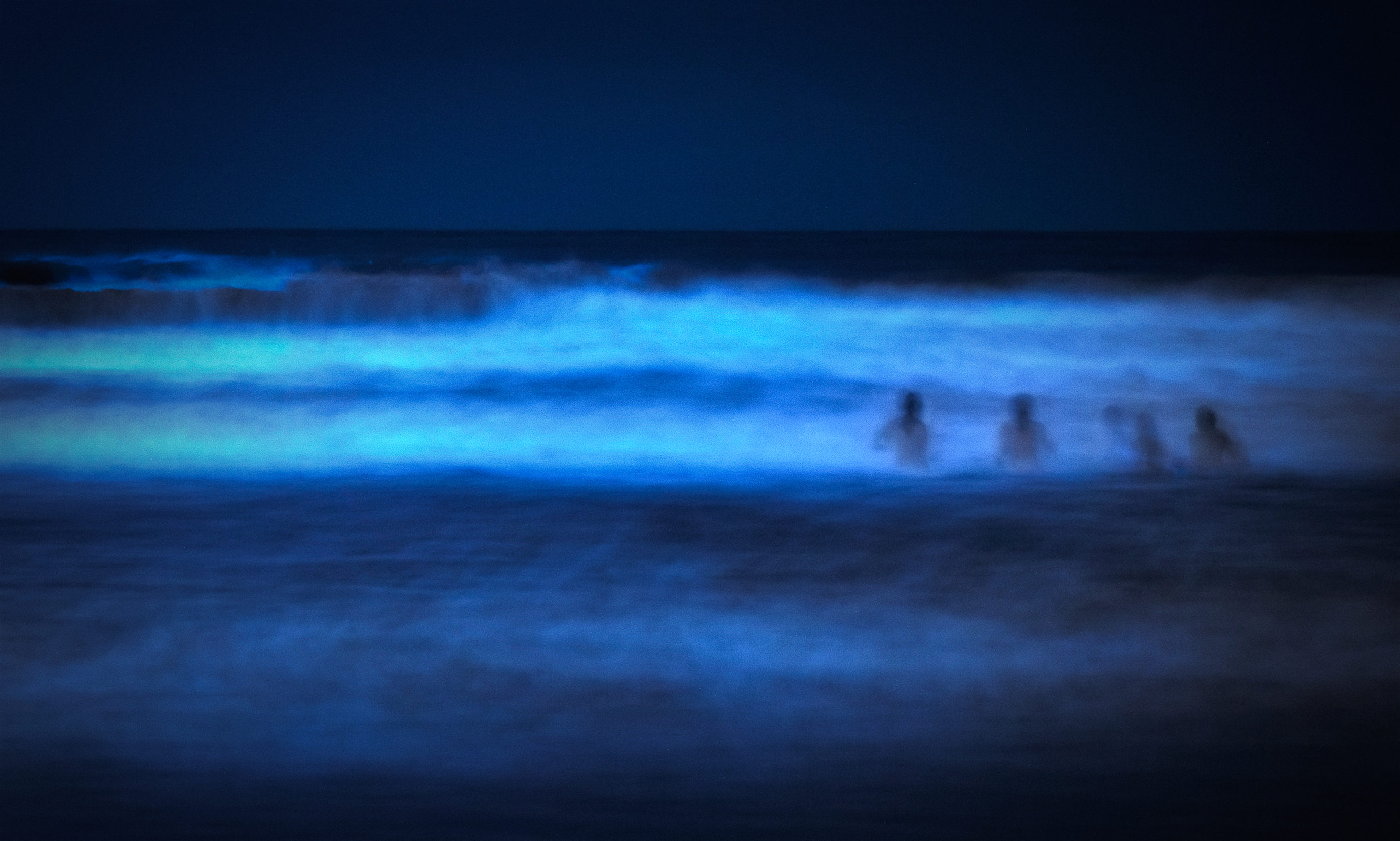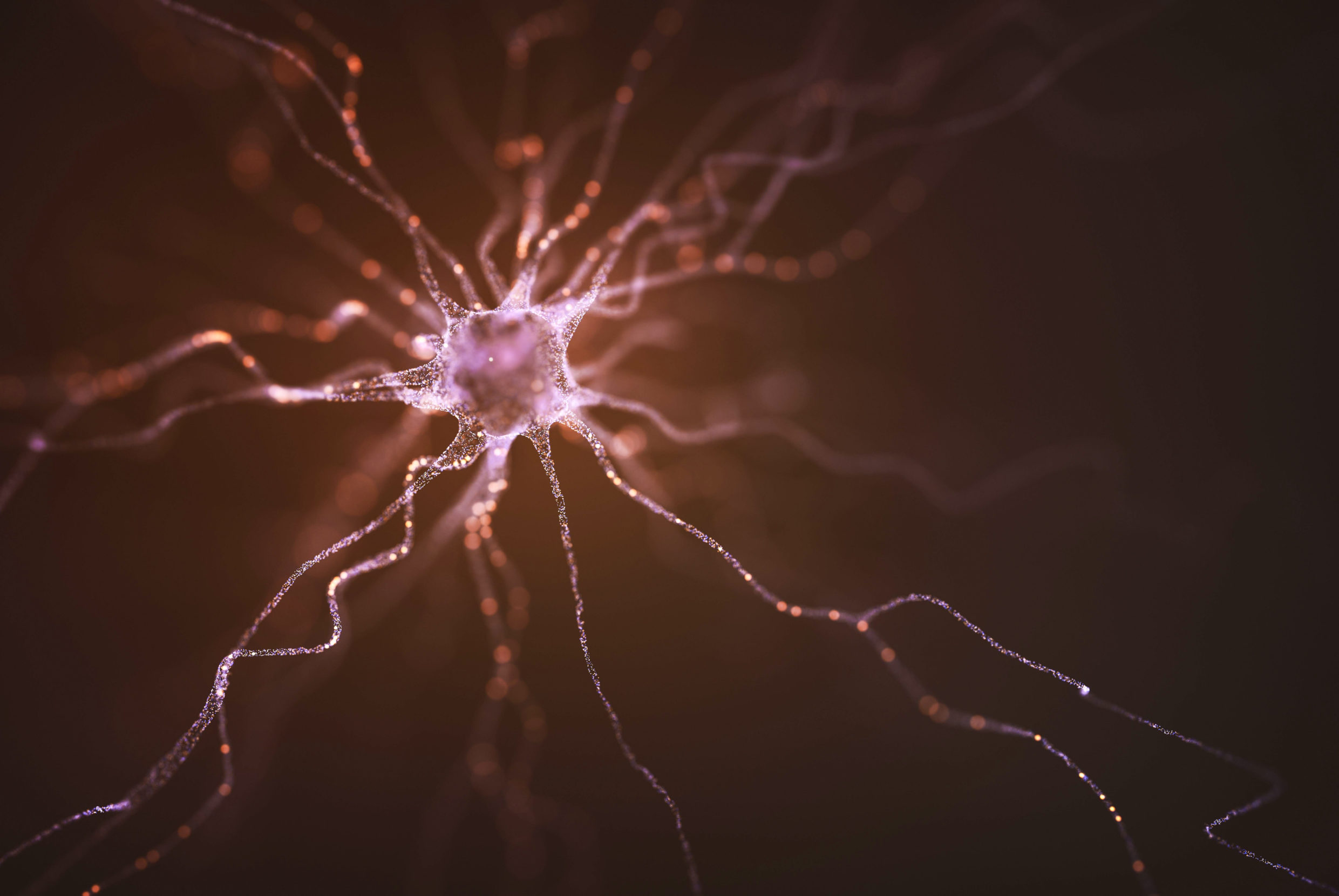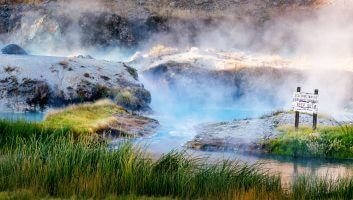Support Hidden Compass
Our articles are crafted by humans (not generative AI). Support Team Human with a contribution!
The streets were eerily quiet, pedestrians hushed and expressionless under protective coverings as they shuffled past in the twilight. A blanket of gray uncertainty washed over the landscape like mist.
The light of a dozen smartphones drifted through the gloom, our signal that we were nearing the beach. Trained intently on the sea, they attempted to capture the phenomenon that had called us here. I strained to see into the darkness past the phones and silhouettes, wondering how heavily I would pay for the hours of sleep my children were missing, searching for evidence that the long night would be worth the break in routine.
Then we stepped from the sidewalk into the still-warm sand, out from beneath the halo of the streetlamps, and into the land of make-believe.
~~
Toasted golden sand, endless blue sky, foaming breakers dotted with surfers — the prototype of a San Diego beach is reinforced on almost every visit. The view serves as a welcome escape from the windowless research lab where I study learning, the process by which we integrate sensory information and adjust our behavior in response — a ceaseless function that permeates our daily existence as thoroughly as the California sunshine.
Understanding how we learn often means wading into unexpected disciplines — neurochemistry, ocean science, human behavior. Sometimes, a jolt of the unpredictable is what we need to illuminate the connections of seemingly disparate threads, and to draw our attention to our own role in the complicated web of life.
The scene we found in the dark beach before us now was far from typical. The color balance had shifted, ambiguity seeping in through the shadows.
~~
The hum of cars and pedestrians in the city streets gave way to the soft rumble of the breakers. A salty breeze with cool ocean spray pricked my arms and face. The air smelled like brine and fish.
Like a fantasy jungle designed by Jim Henson, the interface where body meets earth is teeming with alien morphology. Physical characteristics of the environment — movement patterns of air molecules, frequency of electromagnetic waves, composition of drifting chemicals — are gathered up, drawn in, sorted out.
In the familiar there may be comfort, but on that beach I felt a thrill that only arises from the wholly unexpected.
The small patch of sand where I stood was turning steadily away from the sun. Starved for light, the trio of conical photoreceptors in my eyes, calibrated to the sun’s brilliance, began to falter. As darkness fell, a single, cylindrical receptor type (the rod) — saturated and useless by day — stepped in to capture the lingering patterns of light.
These processes are reassuringly predictable, honed to mechanical precision by millennia of evolution. There is little tolerance for error here.
As I gradually adjusted to this new, blue variation of a beach, my eyes picked up a telltale glow.
~~
I had dragged my family out at this late hour in search of Lingulodinium polyedra, a bioluminescent plankton that blooms sporadically off the coast of Southern California. In daylight, L. polyedra is a murky, brownish-red color, staining the coastal waters a shade that merits the nickname “red tide” when clustered in large aggregations.
In the darkness, however, the muddled red transforms.
When agitated, tiny organelles called scintillons release a flash of blue light from the molecule luciferin (meaning light-bearing). It’s a simple chemical process, no more mysterious than the subsequent reabsorption of those photons by our visual receptors, forwarding the signal along to the brain.
But in a bloom, each square inch of seawater may contain tens of thousands of these microorganisms, all flashing in synchrony with the turbulence of the waves.
Notoriously difficult to forecast, red tides are often not immediately publicized, by which time they may already be fading. Even at the peak of a red tide, a spectacular display may appear along one beach, with nothing visible half a mile away. Or there might be a light show at midnight that is gone by 12:30. Stumbling into one takes a combination of luck and perseverance, and is not amenable to planning.
I had chased the phenomenon for years, missing the time or place by an hour or a mile.
~~
Five weeks had passed since California closed public facilities and chained up parking lots, and it had been a month since my young children had left the confines of our backyard. It was April 2020, and the world teetered in a state of suspension. The ceaseless rhythms of life, the shared routines that mark days and weeks and years, all had halted. Policies and social norms changed daily. Anxiety hung damp and heavy in the air.
“Unexpected uncertainty” refers to an abrupt change in the rules of behavior, when the causal relationships between events, behaviors, and consequences are suddenly rewritten. Under these conditions, we become attentive and alert, struggling to parse out the new rules and unable to relax into the familiarity of old habits.
This heightened vigilance is produced by norepinephrine, released from a small bundle of neurons called the Locus Coeruleus (meaning Blue Spot). Norepinephrine is part of the body’s fight-or-flight system, preparing us to cope with potentially dangerous new situations.
I had chased the phenomenon for years, missing the time or place by an hour or a mile.
It was then, as though drawn to this unpredictability, that the Scripps Institution of Oceanography announced the red tide’s return to San Diego’s coastal waters. It would become one of the longest-lasting and some of the densest aggregations of L. polyedra ever recorded in Southern California.
Against this backdrop, the haze of uncertainty suddenly materialized into the time and place I’d been waiting for.
~~
Onlookers gathered along the shoreline, laughing like children and splashing out waist-deep, fully clothed. Clusters of human-shaped shadows stood, pointing, and murmuring a collective “Ooooohh” when an especially brilliant wave rolled in. Bare feet stomped through the water, sending spatters of glowing blue through the air.

Evening beachgoers in San Diego encounter an electrifying sight — blue flashes of light emitted by marine dinoflagellates. Photo: Rachel Blaser.
Like tiny sparks, the particles of light emitted by these plankton ignited a burst of neurochemical activity in everyone in sight. Their bodies drenched in glowing blue, the spectators were drunk on dopamine.
Perhaps no neurotransmitter is more central to my research on learning than dopamine. The hedonic older sister of norepinephrine, dopamine is as luscious as dark chocolate mousse. It sparkles like fireworks and glows like a campfire. Dopamine is the euphoria of sex and the high of cocaine.
Neurotransmitters follow designated pathways through the brain, branching out and converging again like a complex system of tributaries and currents. Deep in the center of the brain, a set of interconnected structures, called the mesolimbic system, contains an especially high concentration of the brain’s dopamine-producing neurons. When the river levels rise — whether through chemical or electrical stimulation — the result is a powerful reward.
Addictive drugs tear through like a flash flood.
But in a now classic experiment, neuroscientists Jacques Mirenowicz and Wolfram Schultz demonstrated that dopamine is more complicated than a mere reward chemical. They implanted recording electrodes into more than a hundred mesolimbic dopaminergic neurons of monkeys. By pressing a button in response to a specific sound, the monkeys learned they could earn a taste of juice. At first, these dopaminergic neurons fired madly to the unexpected taste of juice.
As the monkeys learned to predict when their treat would occur, though, these same neurons gradually stopped responding.
~~
Signs posted in the sand proclaimed “No Stopping, No Sitting” — seemingly incongruous when the only conceivable response was to stop, to be still and breathe in these errant photons, the briny haze of the air, the soft thunder of the waves sifting through the sand.
Patrolling the beach, police officers dissolved congregations, reminding spectators to maintain social distancing protocols. Regulations insisted that we must move, so we walked along the surf, children dancing in the foam.
Like tiny sparks, the particles of light emitted by these plankton ignited a burst of neurochemical activity in everyone in sight. Their bodies drenched in glowing blue, the spectators were drunk on dopamine.
Cognitive science makes it clear that humans are drawn to familiarity — to the tides that rise and fall like the breath of a sleeping parent, to the steady courses followed by the stars through the sky at night. Our lives unfold to the silent cadence of these cycles of expectation and resolution.
This is intrinsic to our design. At its essence, the human brain is a prediction-generating machine — seeking patterns, anticipating events, evaluating discrepancies, extracting statistical regularities. A seagull’s unmistakable call triggers an avalanche of associations — sounds and smells, memories and emotions.
Like the unassuming little algae that can light up an ocean, the mechanism devised by evolution to accomplish our feats of prediction — the neuron — seems almost absurd.
~~
The first time I viewed a section of neurons under a microscope, in graduate school, the experience was anticlimactic, to be generous — small blobs projecting tufts of tangled, hair-like structures.
And yet, a single neuron’s accomplishments are staggering. Each of the more than 86 billion neurons in the human brain is a minuscule circuit. It holds a slight electrical charge that can be sent darting along its surface by the opening and closing of ion channels, which allow current to pass into or out of the cell.

In this conceptual image, an electric charge energizes a neuron. Photo: Kiyoshi Takahase Segundo/Alamy.
Yes, the body sings electric. Our every thought and feeling — each fear and desire, each poem and technological achievement — arise from the dance of positively and negatively charged particles choreographed by these little cells, in a process that has coursed through the history of humanity.
~~
The whitecaps crackled with delicate light, spreading like lightning along the shoreline with each breaker. I stepped warily into the icy water, watching the swirls of blue, gray, and black rise to my ankles, then pull back into the depths of the ocean. Each footstep into the sand created a glowing imprint — lighting up, then fading into obscurity.
One cell in the ocean transforms mechanical force into light, and a corresponding cell translates that light into the electrical medium of our minds, all in less than a tenth of a second. This astounding process, the result of millions of years of evolution, is one that we simply take for granted — usually.
Tonight, though, primed by the uncertainty of the context, I took nothing for granted. The firing patterns were discordant. There was no existing template on which to match this inexplicable sensory input.
In learning, there is a term for this — prediction error — defined as the difference between an expectation and an actuality.
If there is magic in the world, it is here, caught in the space between what we perceive and what we predict. It occurs when our senses are misdirected, transmitting signals that fail to align with those generated internally. When the world before our eyes is not a world we are equipped to understand.
~~
The process of learning is, in essence, a continuous reduction of prediction error. Walking along the beach generates predictions from muscular movement about expected changes to retinal input. The neurons in the hippocampus piece together a jigsaw of spatial cues to determine whether I have been here before, and what I might expect to find around the next turn.
When sensory input matches our expectations, prediction error is low. Routine is comfortable.
It is when the network is disturbed, when our neurons light up in a flash of surprise, that we sit up and pay attention.
~~
“Mom, look! It’s the wishing star!”
As usual, my daughter’s eye for magic was keener than mine. Venus, Earth’s untamed sister, emerged from the sea foam like her ancient namesake.
The kids paused to conjure an appropriate wish for this rare occasion, as her appearance was typically precluded by city lights and firm bedtimes. After a moment they resumed their splashing, shrieking and spinning until warned that under no circumstances was sandy, glowing microbe water to come into contact with my camera.
So away they spun into outer orbit, kicking up blue tails of sand and water. I wondered whether this night would leave a lasting imprint in their memories, or if it would fade like footprints into their pliable synapses.
Our every thought and feeling — each fear and desire, each poem and technological achievement — arise from the dance of positively and negatively charged particles choreographed by these little cells, in a process that has coursed through the history of humanity.
Children are quick to gasp in wide-eyed wonder, but equally quick to assimilate, to accept into routine whatever experiences come their way. When everything is new and incomprehensible, a centenary solar eclipse is no more nor less astonishing than the appearance of a hermit crab at low tide, or the emergence of the evening star.
Alone, a neuron carries no meaning — there is no “plankton” cell or “seashell” cell in the brain. Meaning emerges from activity patterns across associative networks, at the convergence of a color, a texture, a taste. Synapses link each unit to the network. In the weights of these connections lie our expectations, our memories, our very identities.
To me, past the age where my synapses have started to crystallize, this night was etching itself into memory, solidifying new connections.

A photo illustration conjures the nebulous feel of the red tide phenomenon. Photo: Rachel Blaser.
~~
As we turned away from the beach, I glanced back for a final look at the interplay between the people and the ocean. Each footstep, each movement of body through water, sparked reactions from a million interconnected forms of life.
One cell in the ocean transforms mechanical force into light, and a corresponding cell translates that light into the electrical medium of our minds, all in less than a tenth of a second.
Like any part of an ecosystem, L. polyedra is neither good nor bad. It makes essential contributions to the ocean food web, but becomes dangerous if the balance is upset.
L. polyedra can secrete a toxin, yessotoxin, which accumulates in the tissues of animals that feed on plankton, harming, in turn, those who eat these fish and shellfish. The various species that produce red tides can have lethal effects on top predators, including humans, who are also connected to their food web. When these enormous masses of microorganisms begin to die off, the decomposition depletes oxygen in the water, killing countless fish and invertebrates.
What these agitated dinoflagellates accomplish with their flashy blue lights remains something of a mystery. The most likely possibility is that luminescence serves an anti-predatory function, attracting the attention of larger predators to chase away (or consume) immediate threats.
It is effectively a signal fire — a warning light that the system has been perturbed, an appeal for defensive aid from those less powerless to the currents and tides.
~~
An event exceeding expectation results in positive prediction error — whether a familiar beach is suddenly rendered luminescent, or an addictive drug floods the brain with dopamine.
This error drives learning, as behaviors, expectations, synaptic weights are adjusted to improve the match between expectation and reality. Called error correction in learning models, this process of adjustment is the mechanism by which a perturbed system is returned to equilibrium, by which balance is recovered.
In the weights of these connections lie our expectations, our memories, our very identities.
As Schultz and Mirenowicz found with their monkeys, when prediction error approaches 0, the dopamine surge fades, and a reward loses its ability to produce the original excitement. We begin to take it for granted.
In another experiment, Fiorello and colleagues found that identical rewards produce a stronger dopaminergic response when they are less probable, and a weaker response when they are more probable. Even as the original response acclimates, if the expected reward fails to materialize (producing negative error), a suppression of dopamine is seen in response to disappointed expectations.
Dopamine, it turns out, is less of a chemical of pleasure and more a signal of prediction error.
If the mesolimbic pathways are repeatedly overstimulated, such as with addictive drugs, the error becomes extreme. Initially the euphoria is intense, but this fades rapidly as the system strains to correct the imbalance. Tolerance develops as the dopamine system becomes dulled and less responsive to daily reward.
A tenuous stability is attained, but only at tremendous cost. The cycle eventually leads to long-term damage to the brain’s reward system.
~~
The beauty of learning is that it is, by definition, adaptive to changing conditions. Hiding within our routines and avoiding missteps prevents that essential process from taking place. As we explore, each one of us — scientists, travelers, children, even my rats in their mazes — gathers sensible and insensible experiences, finds structure and meaning, determines the best course of action.
The night of the red tide, facing this alien microorganism, I was struck by the value of uncertainty. In the familiar there may be comfort, but on that beach I felt a thrill that only arises from the wholly unexpected.
Brief as my encounter was, I know better than to take that novelty for granted.
In recent decades, red tides worldwide have become increasingly frequent and long-lasting, due in part to human influence. Unusually high levels of nutrients in the water, such as those produced by agricultural runoff, and other factors, including warm surface temperatures promoted by climate change, lead to over-proliferation of the organisms responsible for red tides.
We can accept the new conditions that we have created, existing in a state of tolerance — and endure that tremendous cost of long-term damage. Or we could choose to alleviate the extremity of our error, and to repair the damage that we have caused.
Because sudden blooms of microorganisms are more than a glowing spectacle. Driven into a tumultuous overabundance, these creatures are radiating a desperate beacon of light.
Our charge is to perceive and respond to the imbalance — before the magic flickers out.
Dr. Rachel Blaser
An associate professor in the Department of Psychological Sciences at the University of San Diego, Rachel Blaser enjoys exploring ways to make science more accessible and exciting to the public through imagery and storytelling.



